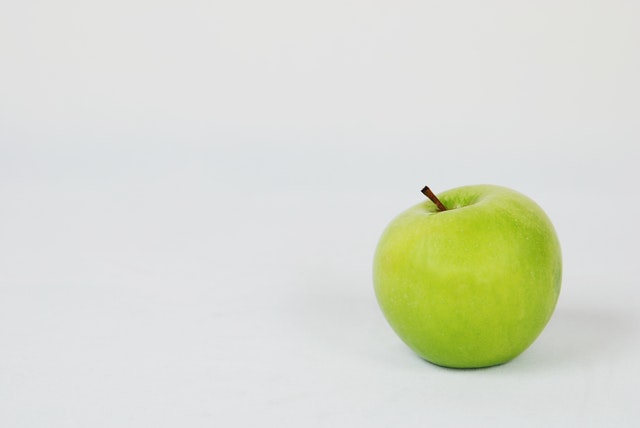By Melinda Maryniuk, MEd, RD, CDCES
For many of us, the uncertainty and change that has come over the last year have upset our healthy habits and routines. We find ourselves eating more (particularly stress-eating more junk food), exercising less and then feeling anxious about gaining weight. Here are six strategies that may be helpful as we try to stay on track with healthy habits and prioritize good self-care .
Start each day on the right foot. Find a routine that works for you to help you start the day on a positive note. Set an intention. Write in a journal or just whisper to yourself what you are going to focus on for the day. Aim to do “two good things” each day – something you’ll do for yourself, and something extra you’ll do for a friend or neighbor. Keep your goals small and realistic – and then check in with yourself at the end of the day.
Make the best choice the easy choice. This may be the perfect time to reorganize your cupboards and freezer. Move items around so the best, healthiest choices are the first ones you’ll see when you open the door. Put the baby carrots in an easy to reach bowl for snacking. Keep grapes or blueberries at the front of the freezer for a quick cold-bite sweet snack. Put your sneakers at the front door so they are ready to go. This is also the time to try to avoid buying foods that you know are particularly tempting for you. Try to avoid using that willpower muscle if you can…
Try something new. Be flexible. It may be hard to find what you’re used to buying in the grocery store. If the supply of fresh fruits and veggies is limited, check the canned and frozen aisles for lower carb choices such as green beans, asparagus, tomatoes, cauliflower, and berries. Try some new protein options such as canned salmon, frozen tilapia, or vegetarian options such as tofu, and white beans. Make a new recipe. We’ve shared two great ones below that can be made with food that doesn’t perish easily. Share ideas with friends (and your Facebook community!)
Keep moving. Exercise is just as important as ever if not more so! Too much screen time (Zoom meetings or binging on Netflix) is contributing to our moving less. Plan time to move in the morning and set your alarm to remind you to get up and go. This may be a great time to try something new in the privacy of your home such as yoga or Zumba – as many exercise classes are being offered at no cost online. Here’s a super-helpful list of free workouts you can do online at home… and if you’d like to get started with exercise, check out our free 7-day beginner exercise guide!
Acknowledge your feelings. During this difficult time, we may be filled with grief or worry for ourselves or for loved ones. Don’t brush the feelings aside. Many experts agree that being able to acknowledge grief or worry is the first step to managing it. Keep your focus on the present moment and what you can control. Notice the good things going on all around us – spring buds, the many acts of kindness, the hardworking healthcare teams and all the amazing people keeping our grocery stores and pharmacies open.
Practice strategies for dealing with cravings. During times of stress, cravings are often stronger than usual, but that doesn’t mean that the usual strategies for “riding a cravings wave” won’t be helpful. Here are ten tips for managing cravings that may be super-useful… How to manage cravings
The main thing to remember is that this is a hard time, but together we can and will get through it. Do the best you can to stay on track and be kind to yourself when you fall a little short. It’s OK—we’re all doing the best we can. In the meantime, here are two healthy recipes that can be made with items you probably have in your pantry. Sometimes trying a new recipe can brighten up an otherwise dull day… bon appetit! 🙂
Sautéed Cabbage (Adapted from Ina Garten)
Serves: 6
Per serving: 90 calories, 12 grams carbs, 5 grams fiber, 4 grams fat
1 small head white cabbage (about 2 pounds)1 Tbsp butter
1 Tbsp olive oil
1 tsp kosher salt
½ tsp freshly ground black pepper
Cut the cabbage in quarters and remove the core. With the cut side-down, slice as thinly as possible. Heat the oil and butter in a large heavy-bottomed pot over medium high heat. Add cabbage, salt and pepper and sauté for 15-20 minutes, stirring frequently until cabbage is tender and begins to brown. Season, taste and serve warm
Hummus
Makes about 1.5 cups.
Nutrition information: Per 2 Tbsp: About 50 calories, 4 grams carb.
1 (15-ounce) can chickpeas
1/4 cup fresh lemon juice (1 large lemon)
1/4 cup well-stirred tahini
1 small garlic clove, minced
2 tablespoons olive oil
1/2 teaspoon ground cumin
1/ 2 tsp salt (or to taste)
2 to 3 tablespoons water
In a food processor, begin by placing the tahini and lemon juice and process for a minute until the mixture turns in to a thick, whipped paste. Then add the garlic, chickpeas and spices blending for several minutes until it is very smooth. Check the mixture for consistency and then add 2-3 Tbsp cold, water while the processor is running to make the hummus more light and creamy.
While this article provides guidance about healthy eating, it’s important to stress that for many people, diet and exercise alone aren’t enough to reach a healthier weight. The good news is that there are safe and effective medical treatments available that can address the biological issues that make sustained weight loss difficult. To find a physician near you who specializes in weight management, click here.
Get a weekly text to help you stay on track with your health goals! Click here to sign up.
This article was sponsored by Novo Nordisk Canada. All content is created independently by My Weight – What To Know with no influence from Novo Nordisk.

